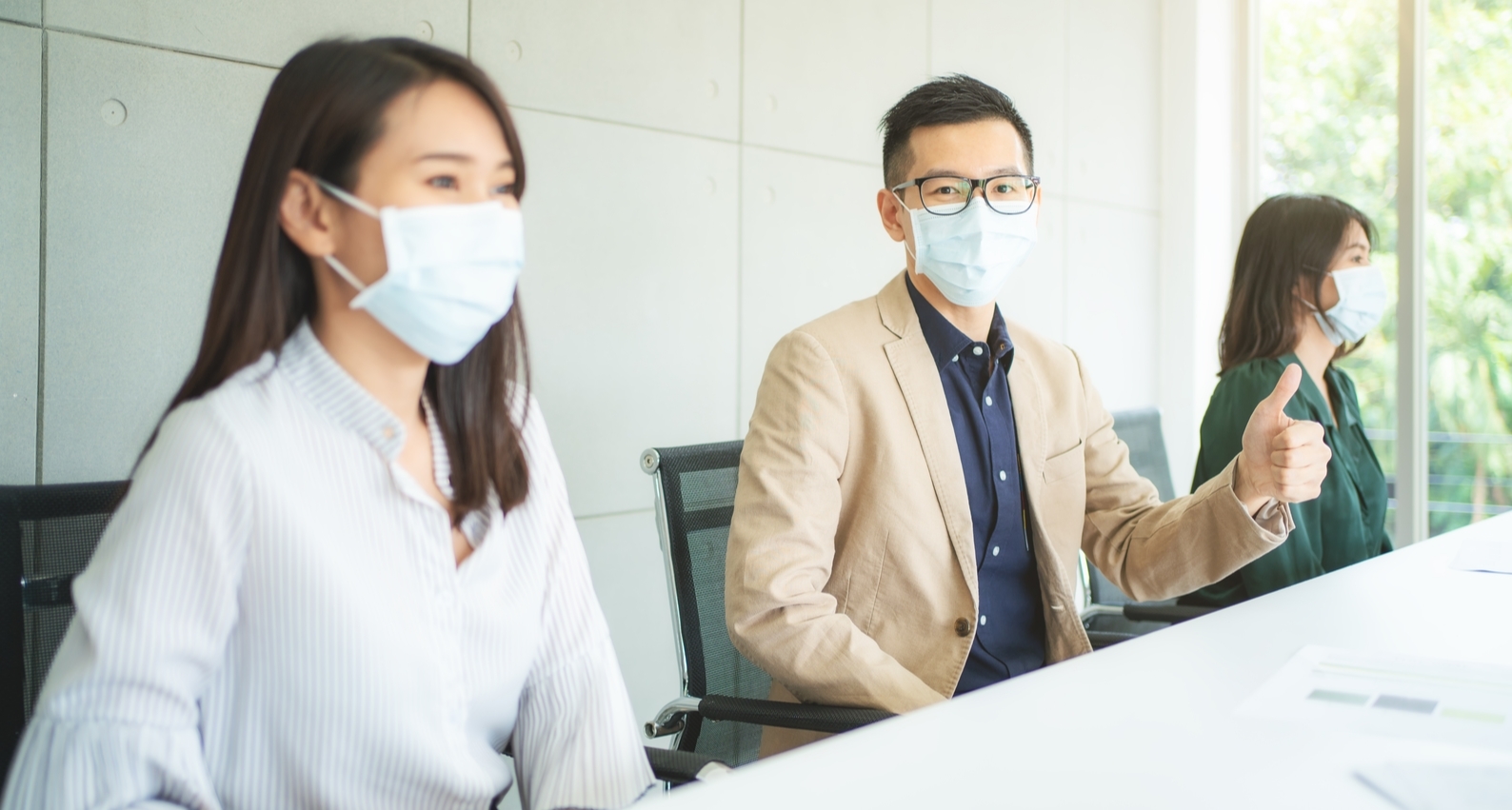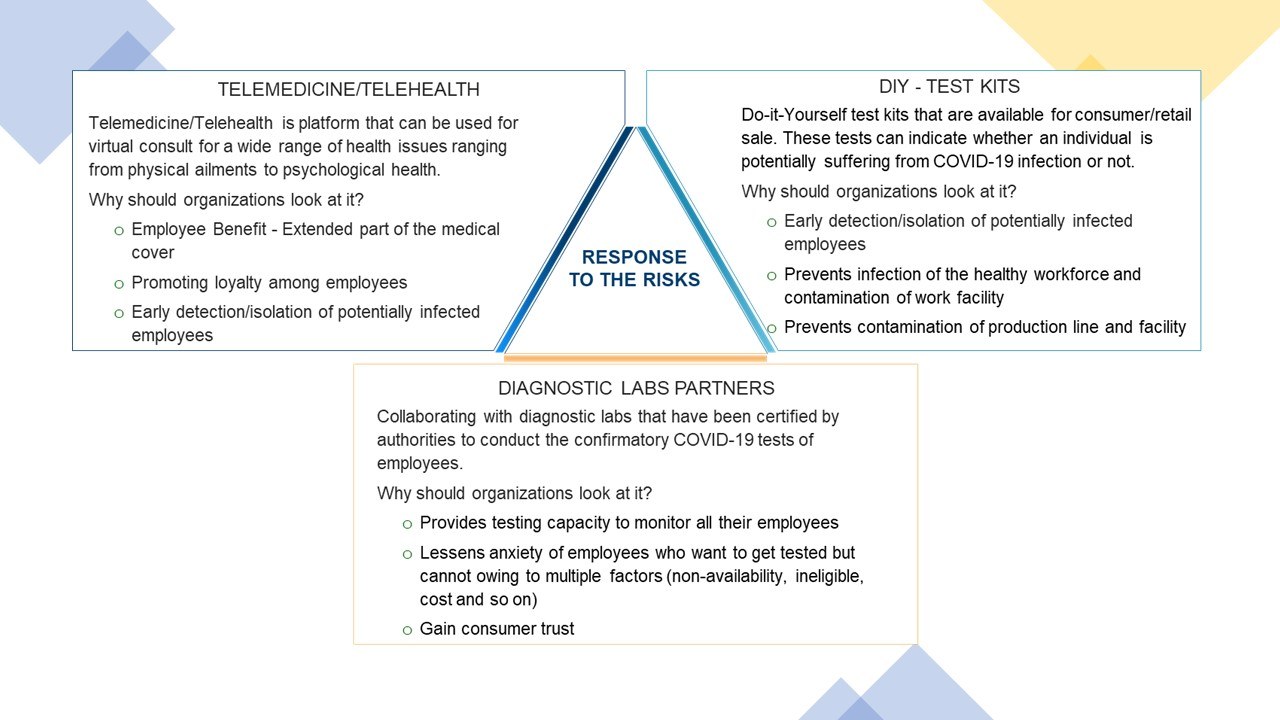Workplace 2.0: Balancing Business Continuity and Employee Safety
Published on 02 Jun, 2020

The COVID-19 pandemic is showing no signs of letting up. With the global economy sliding into recession, businesses must restart operations to survive. While this step is imperative to save the economy, it also means compromising on employees’ health and safety. Can workplaces maintain the delicate balance between business continuity and employee safety?
As COVID-19 continues its rampage with no robust preventative therapy in sight, organizations have been forced to restructure and rethink their way of running operations. While countries have managed to control the spread of the virus to some extent by restricting movement, the threat of an economic collapse looms large. With governments now under pressure to mitigate the impending economic crisis, businesses worldwide are re-opening and trying to return to ‘Business as Usual’ (BAU), carving out a new ‘normal’.
The critical question faced by all businesses is how to ensure the health of the workforce without compromising workplace hygiene and employees’ privacy. Here we talk about these threats and the means to mitigate them in detail:
Workplace Safety – There are consequences of ignoring the presence of an infected employee on the floor:
- Loss of Productivity: Healthy employees could be infected
- Contaminated Products: Production line, product batches could be compromised
- Contaminated Workplace: Working conditions could be affected, thus forcing closure of facilities
Employee Privacy – While ensuring workplace safety, maintaining employee privacy is equally important, considering the social backlash and the mental stress associated with the disease.
Considering the current situation, organizations could exercise prudence by deploying a well-thought-out solution that accords them the flexibility and control to identify potential infection risks. It would be ideal to ensure employees are tested periodically, which would help to keep the infection rates under control. Employees can take the test safely at home by adopting these measures (suggested here) that their organization can provide:
- Telemedicine/Telehealth
Telemedicine/Telehealth are platforms that can be used to virtually consult with health professionals on a range of issues—from physical ailments to psychological health. In the pre-COVID-19 era, these platforms were primarily used to book online appointments for virtual consultations for milder health issues and psychological health. With a growing need to avoid close contact in waiting rooms and to ensure continued social distancing, this technology has seen wider adoption through inclusion in Mediclaim/insurance coverages and money being funded to expand their operations as well. Several players have transitioned from being low-stakes participants into critical service providers.- Hims & Hers
This company is known for its do-it-yourself (DIY) wellness and sexual health test kits for men and women. It recently started offering FDA-approved Emergency Use Authorized (EUA) COVID-19 test kits that use home-collected saliva kits.
Ordering Process: To order the test kit, customers enter their symptoms, travel history and/or other relevant medical information into a form online. The company then connects them with a licensed provider to determine if the test is required, and, if yes, ships the kit to the customer’s address.
Partner Lab: Rutgers Clinical Genomics Laboratory
Service Cost: USD 150
Test results: 3 - 5 days - Vault Health
Vault Heath is an at-home healthcare practice specializing in men’s medicine; in the face of the ongoing pandemic, the company is now also selling FDA EUA saliva test kits.
Ordering Process: The test is physician-ordered (based on medical history and symptoms), supervised by a provider, and uses physician-reported saliva collection test for COVID-19. The test claims to be as effective as the swab test. The COVID-19 test is supervised by a Vault Healthcare professional through a telehealth video consultation on Zoom. This aid eliminates the risk of person-to-person exposure and ensures accurate sample collection.
Corporate Testing is available with three options: (i) Individuals purchase single tests – Organizations can reimburse them; (ii) Individual (prepaid tests) – Organizations purchase prepaid test credits for their employees/clients; (iii) On‑site testing – Organizations purchase testing kits and conduct tests on site.
Partner Lab: RUCDR Infinite Biologics, Spectrum Solutions
Service Cost: USD150 (for individual tests); bulk pricing available (for corporate testing)
Test results: 2–3 days
- Hims & Hers
- DIY Test Kits/Sample Collection Kits
These services are offered by health and wellness companies. The kits facilitate at-home tests for customers and aid local authorities in expanding their testing capabilities and providing test results within days. The idea is to connect consumers with laboratory testing and offer validated tests ranging from food sensitivity to fertility and STDs. These platforms claim to be convenient, always accessible, accurate, and offer dedicated clinicians to explain test results. In the current scenario, these platforms are offering COVID-19 tests for public and private organizations to screen their workforce and quarantine carriers. Companies offering such services include Everywell, Coris Biocept, and Sensing Self. - Diagnostic Labs
These labs are certified by local authorities to conduct screening as well as confirmatory COVID-19 tests. Companies could partner with such labs to access these tests and ensure a healthy workforce.
WHY SHOULD ORGANIZATIONS LOOK AT THESE OPTIONS?

The solutions discussed here enable organizations to maintain a standard of hygiene at their workplaces without compromising employees’ privacy. Also, thorough evaluations would help them deploy the strategy most appropriate for their business model, thus promoting customers’ trust while also allaying employees’ anxiety.